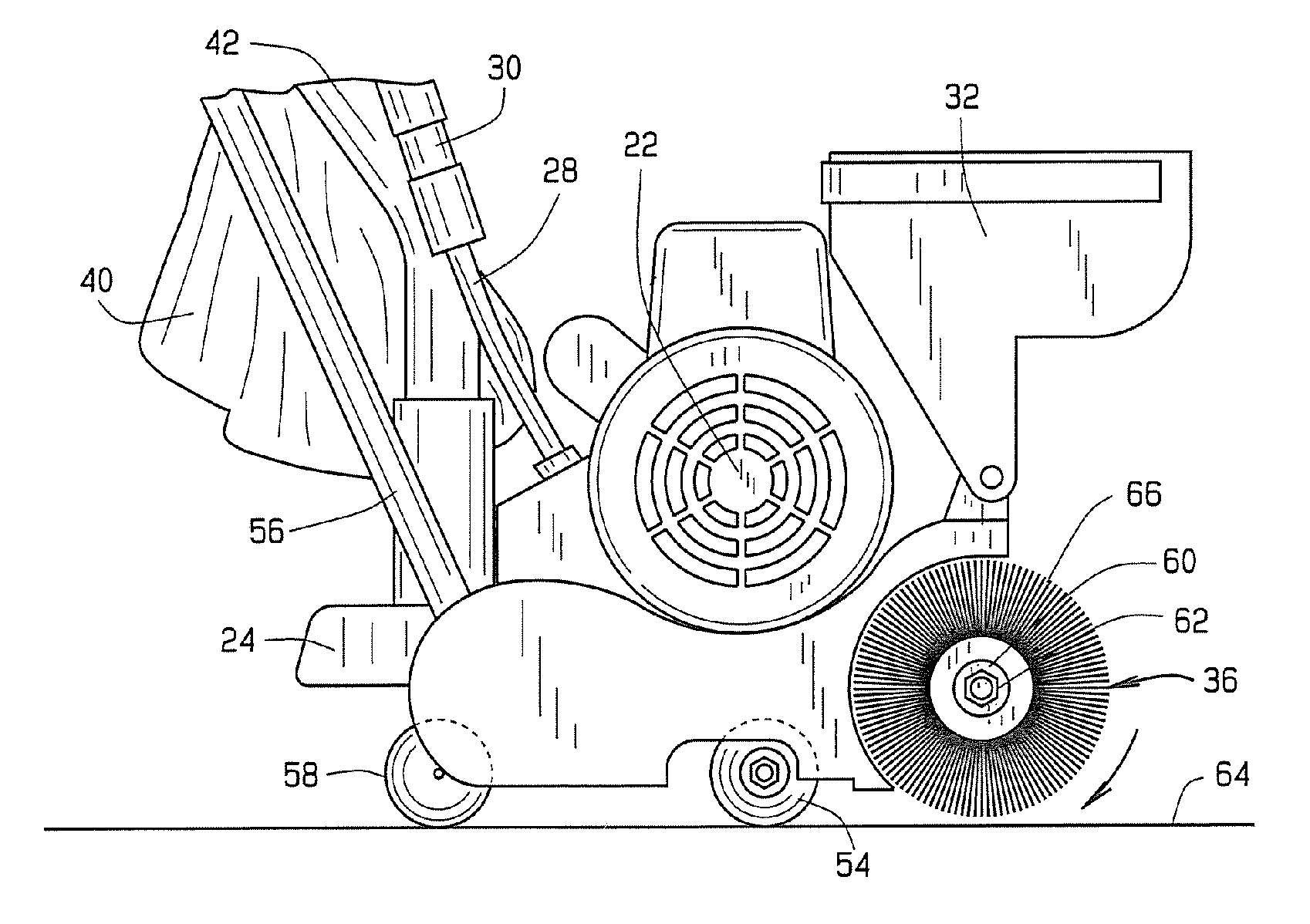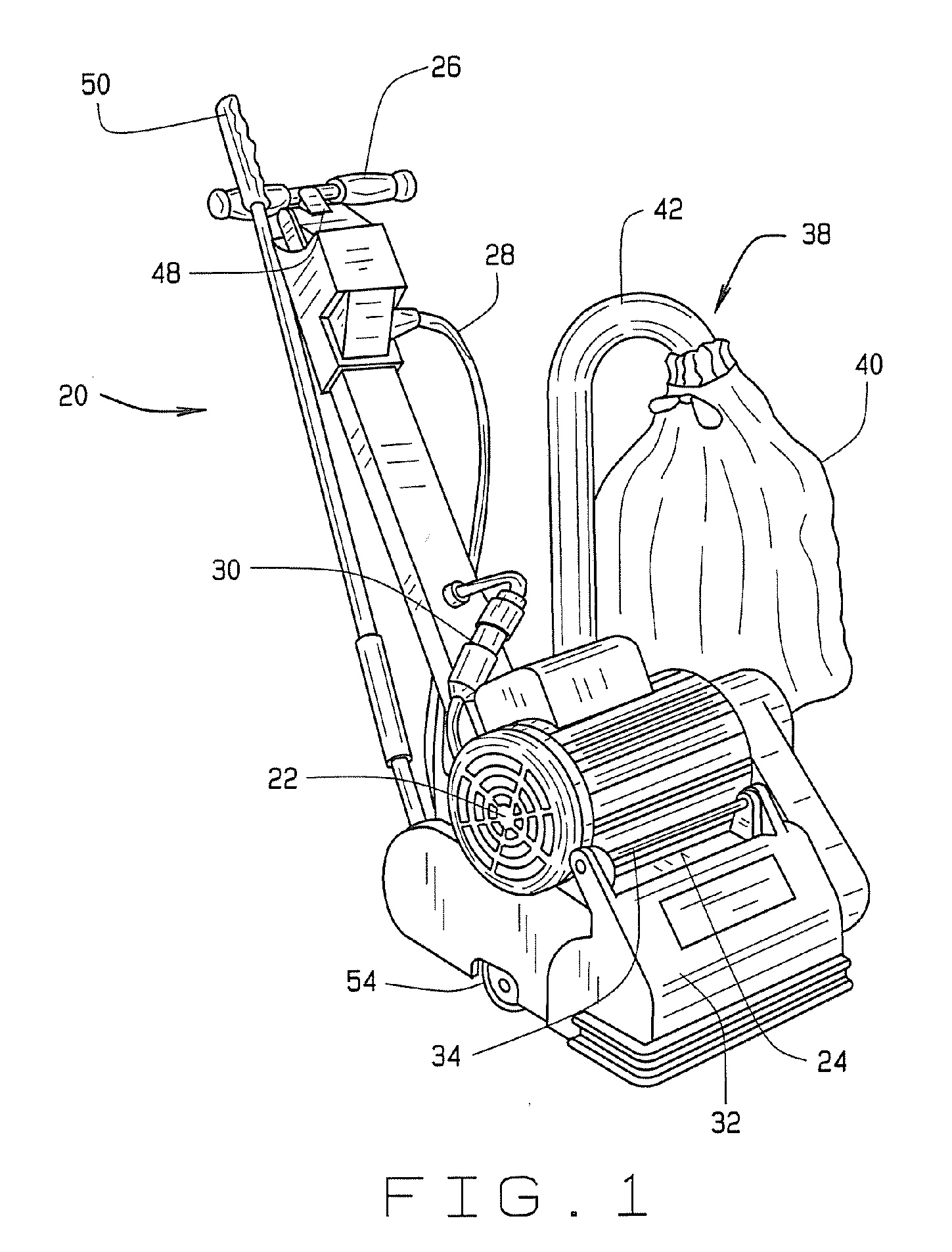Process and apparatus for restoring the luster to the surface of factory finished wooden floors
a technology restoration equipment, which is applied in the direction of grinding/polishing equipment, grinding machines, manufacturing tools, etc., can solve the problems of reducing the luster of factory finished wooden floors. , to achieve the effect of increasing the cost of the project, time-consuming and laborious
- Summary
- Abstract
- Description
- Claims
- Application Information
AI Technical Summary
Benefits of technology
Problems solved by technology
Method used
Image
Examples
Embodiment Construction
[0019] Factory finished wood flooring is currently offered by many manufacturers using a variety of different manufacturing techniques. One manufacturing technique involves a long production line described below. Multiple strips of bare wood are put on a long conveyor and run under a belt sander. A stain may then be applied to the bare wood after it has been sanded. After the stain is applied, hair like fibers (sometimes called “nibs” in the industry) may be raised up in the wood grain. The strips of stained wood with raised nibs are sometimes run through a stationary denibbing machine with an abrasive sanding brush (sometimes called “a denibbing brush” in the industry). The brush is run at low RPM's with a finer grit to remove the “nibs”. A base coat of wood sealer is then applied.
[0020] The base coat of sealer may raise additional nibs. Again, the strips of stained, sealed wood with raised nibs are sometimes run through another denibbing machine having a denibbing brush to knock ...
PUM
| Property | Measurement | Unit |
|---|---|---|
| abrasive | aaaaa | aaaaa |
| length | aaaaa | aaaaa |
| adhesion | aaaaa | aaaaa |
Abstract
Description
Claims
Application Information
 Login to View More
Login to View More - R&D
- Intellectual Property
- Life Sciences
- Materials
- Tech Scout
- Unparalleled Data Quality
- Higher Quality Content
- 60% Fewer Hallucinations
Browse by: Latest US Patents, China's latest patents, Technical Efficacy Thesaurus, Application Domain, Technology Topic, Popular Technical Reports.
© 2025 PatSnap. All rights reserved.Legal|Privacy policy|Modern Slavery Act Transparency Statement|Sitemap|About US| Contact US: help@patsnap.com



